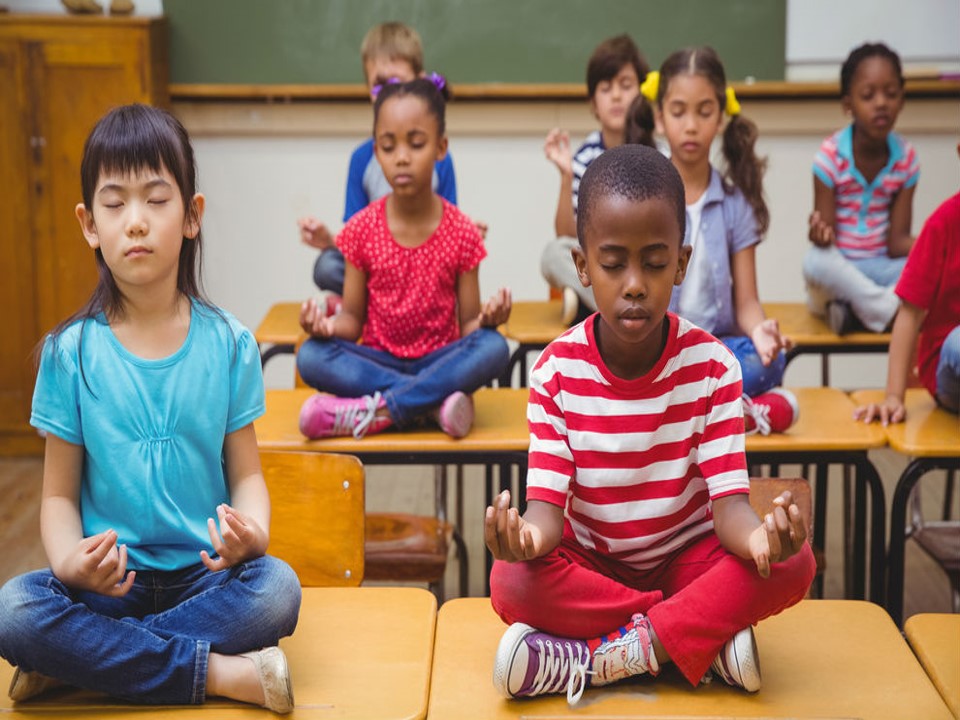 Mindfulness practices in the schools seem to be thriving, with millions of kids being introduced to it in one form or another. Along with its popularity, there’s been some push-back from parent groups about whether or not mindfulness violates the separation of church and state. While it’s true that mindfulness emerged from Buddhism (in particular the Theravada tradition of Southeast Asia), mindfulness was put on a solid secular foundation in the early 1970’s when biologist Jon Kabat-Zinn established an eight-week program called Mindfulness-Based Stress Reduction at the University of Massachusetts Medical School. Since that time, over 3,000 scientific studies have been done, most of them verifying the effectiveness of mindfulness in reducing stress, enhancing well being, and promoting a number of other healthy traits and behaviors. Hundreds of studies have been completed on mindfulness with children and adolescents and similar positive benefits have been recorded, including the enhancement of self-regulation, executive functioning, working memory, sustained attention, and even school grades.
Mindfulness practices in the schools seem to be thriving, with millions of kids being introduced to it in one form or another. Along with its popularity, there’s been some push-back from parent groups about whether or not mindfulness violates the separation of church and state. While it’s true that mindfulness emerged from Buddhism (in particular the Theravada tradition of Southeast Asia), mindfulness was put on a solid secular foundation in the early 1970’s when biologist Jon Kabat-Zinn established an eight-week program called Mindfulness-Based Stress Reduction at the University of Massachusetts Medical School. Since that time, over 3,000 scientific studies have been done, most of them verifying the effectiveness of mindfulness in reducing stress, enhancing well being, and promoting a number of other healthy traits and behaviors. Hundreds of studies have been completed on mindfulness with children and adolescents and similar positive benefits have been recorded, including the enhancement of self-regulation, executive functioning, working memory, sustained attention, and even school grades.
I do have a concern, however, that some public school teachers may be injecting religious or spiritual elements into their teaching of mindfulness, so I’m listing here 4 things to avoid when implementing mindfulness in a public school environment:
- Avoid spiritually-based placement of hands during mindful breathing. These are called ”mudras” in Sanskrit, and have specific spiritual associations (e.g. the most common one involves putting the back of one’s hands on the folded knees and then touching the thumb with the fingers, signifying the union of the individual soul (Atman) with the universal soul (Brahman) (see above photo). Instead, simply tell students to place their hands in their lap or on their desk.
- Don’t use paraphernalia that have religious or spiritual associations. A very popular item with many teachers is the use of Tibetan Singing Bells or Bowls, which make a beautiful sustained tone. But these instruments connect mindfulness to Tibetan Buddhism and thus represent a violation of the First Amendment. Instead, choose a secular bell, chimes, or even a tuning fork to attain the same effect.
- Stay away from names of poses, postures, or gestures that are Buddhist or Hindu. Some teachers have students at the beginning or end of practice fold their hands at the level of their heart and say the word ”Namasté,” which means literally ”The divine in me bows to the divine in you.” Quite clearly, this is a spiritual injunction and it violates the separation of church and state. Instead, end a session by having students hold hands, smile, and/or shake hands with a neighbor (which emphasizes the role of kindness in mindfulness practice).
- By all means, avoid giving spiritual sermons or lectures. If you’re a student of a Buddhist or Hindu tradition, stifle the desire to lecture your students on the seven ”chakras” (energy centers of the body), for example, or squelch the need to talk about the Hindu Universal Soul or the experience of Buddhist Emptiness, or even that we all share the same soul. There are many of your colleagues that would like to preach to their classes about the Rapture of Christianity or tell Bible stories. The courts have ruled against that, and are likely to do the same with these practices.
Remember that you are there to help students practice mindfulness in a purely secular way; not to attain Enlightenment or Nirvana, but to enhance their attention, develop their executive functioning (e.g. reflection, working memory, decision-making), and improve their self-regulation skills. Err on the side of secularity (e.g. even the use of children’s literature that has been written by Zen monks or Buddhist scholars should be avoided, and the term ”mindful stretching” should be substituted for ”yoga”). Keep this in mind: we may only be one Supreme Court decision away from mindfulness joining school prayer as something that isn’t allowed in the classroom.
For more information about using mindfulness responsibly in the schools, see my book: Thomas Armstrong, Mindfulness in the Classroom: Strategies for Promoting Concentration, Compassion, and Calm (ASCD).
This article was brought to you by Thomas Armstrong, Ph.D. and www.institute4learning.com.
Follow me on Twitter: @Dr_Armstrong



















